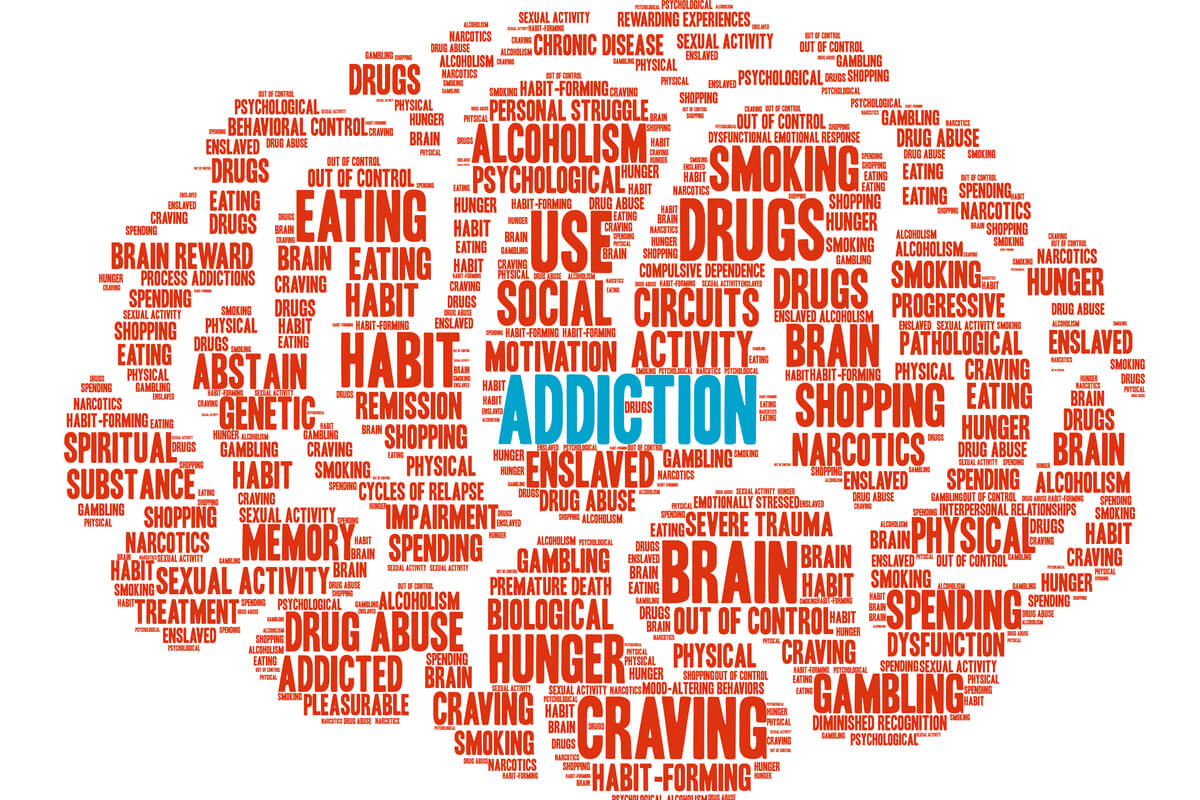
This is not a straightforward question. The amount and frequency with which people drink varies highly between genders, ages, cultures, and social environments. The amount of alcohol that one person deems appropriate might be drastically different than someone else. Some people should abstain from alcohol completely, such as those who are pregnant, taking certain medications, or have a history of alcohol use disorder (AUD). For other people, regular alcohol use may be relatively low risk and appropriate. There is no amount of alcohol that is “completely safe” for any individual, and alcohol use in any capacity always comes with some health risks. However, the “exact amount” that is right depends largely on the individual.
What is the Definition of “One Drink”?
A “standard drink” in the United States is the equivalent of the following:[2]
- 12 ounces of regular 5% alcohol beer
- 5 ounces of 12% alcohol wine
- 1.5 ounces of 40% alcohol distilled spirits
Different Amounts of Alcohol Use
Different levels of alcohol use can be broadly understood as follows:
Abstinence
Abstinence means a person doesn’t drink alcohol at all. Some people may choose not to drink any alcohol for certain health reasons, including pregnancy (although a small amount of alcohol in late pregnancy is generally thought to be safe these days), or liver disease. Other individuals may choose not to drink due to religious or other lifestyle beliefs. Others may choose not to drink at all due to a history of problematic drinking.
Light Drinking
A “normal and safe” level of alcohol consumption has previously been defined as about two drinks or less a day for cisgender men and one drink or less a day for cisgender women. However, many factors can change what should be considered a “safe” level of drinking for an individual. Many medications can have dangerous interactions with alcohol, and alcohol can also be harmful to people with certain health conditions.[1] Therefore, even one drink could potentially be dangerous for someone with certain medical or mental health conditions.
Moderate Drinking
Moderate drinking is defined as someone who is drinking more than 1-2 drinks per day, or consuming a larger number of drinks in one sitting. This degree of drinking might be a warning sign of an unhealthy relationship to alcohol.
Heavy or Severe Drinking
NIAAA defines “heavy drinking” as a man drinking four drinks on any one day or 14 drinks per week, and women drinking three drinks on any one day or seven drinks per week. SAMHSA offers a similar but different definition, defining heavy alcohol use as engaging in binge drinking on five or more days in the past month. Binge drinking is generally defined as a cisgender man drinking five or more alcoholic drinks or a cisgender woman drinking four or more alcoholic drinks within about two hours. Transgender alcohol use is generally understudied, but a transgender individual can generally use the recommendations for the sex they were assigned at birth, keeping in mind potential interactions with any medications they may be taking.
Alcohol Misuse & Alcohol Use Disorder
While the heavier a person drinks might be one concerning sign of an alcohol use disorder, the quantity of alcohol is less important than the way it impacts your life. Some people drink more heavily but may be highly functional and know how to keep their alcohol use from affecting their work, family, or other responsibilities. Others may not drink as many drinks but are drinking in a way that negatively impacts their families, job performance, or their safety. It is not the “amount” that matters per se, but the effect it has on a person’s life.
“Alcohol use disorder” (AUD) is any use of alcohol that results in significant negative health or social consequences.
“Alcoholism” is a common, older term used to refer to what is now known as alcohol use disorder.[3]
A person with alcohol use disorder frequently drinks more than intended and has trouble stopping their drinking once they begin. They may experience negative health and social consequences as a result of their drinking, need increased levels of alcohol to feel drunk, and experience withdrawal symptoms when the alcohol they’ve consumed wears off. These are clear signs that a person has a problem with drinking.
Recommendations for Abstinence in Recovery for AUD
Whether a person who is recovering from problems with alcohol misuse needs to be completely abstinent from alcohol is a matter of some debate. Many mental health professionals and addiction organizations recommend complete abstinence. The idea behind these recommendations is that no level of alcohol consumption is safe for individuals in recovery or that it is too difficult to predict where a particular individual’s level of “safe” consumption might be.
However, some experts argue that there is evidence that alcohol abstinence is not the only option for those in recovery.[4] While individuals obviously must be careful when consuming alcohol, controlled drinking combined with the appropriate addiction therapy appears to be a viable recovery path for many people. This strategy, sometimes referred to as “harm reduction”, may work well for some people instead of full abstinence.
Signs You Have a “Drinking Problem”
“How much you drink” isn’t really the right question to ask if you are drying to ascertain whether or not you have a “drinking problem”. Instead, the right question is “to what extent is alcohol use negatively impacting my health, my life, or both”?
You may have a problem with alcohol if your alcohol use has affected your health, relationships with loved ones, or your ability to perform essential tasks like work or go to school.
If you logically know your alcohol consumption isn’t good for your quality of life but continue to engage in alcohol use, you may have an alcohol use disorder.
Resources That May Help
Discontinuing or even cutting back on alcohol use can be difficult. In severe cases, alcohol withdrawal can even be life-threatening. If you can’t quit alcohol use on your own, talk to an addiction treatment professional. Alcohol dependence is a medical condition, and there is no shame in seeking help.
An excellent place to start recovering from alcohol use is by talking to a mental health professional who specializes in addiction. These individuals are trained in helping people overcome alcohol use disorder. They can help you develop a treatment plan that is evidence-based and tailored to your needs.
One free, confidential resource people looking to get control over their alcohol use can start with is SAMHSA’s National Helpline, available at 1-800-662-4357.[5] Through this number, you can get help in English or Spanish in finding further resources that can help you or a loved one in the recovery process, including learning about your local facilities, support groups, and community-based organizations.
Studies have also found that peer support groups can be a useful resource in recovery, although their long-term benefits aren’t fully understood.[6] Groups can help you connect with individuals dealing with similar problems who can empathize with your struggles. Groups may be a good way to find support in your recovery efforts, especially if you lack a strong support network at home.

Medically Reviewed By Elena Hill, MD, MPH
Elena Hill, MD; MPH received her MD and Masters of Public Health degrees at Tufts Medical School and completed her family medicine residency at Boston Medical Center. She is currently an attending physician at Bronxcare Health Systems in the Bronx, NY where ... Read More
- Drinking Levels Defined. National Institute on Alcohol Abuse and Alcoholism. https://www.niaaa.nih.gov/alcohol-health/overview-alcohol-consumption/moderate-binge-drinking. Accessed August 2022.
- What Is a Standard Drink? National Institute on Alcohol Abuse and Alcoholism. https://www.niaaa.nih.gov/alcohols-effects-health/overview-alcohol-consumption/what-standard-drink. Accessed August 2022.
- Alcohol Use Disorder. MedlinePlus. https://medlineplus.gov/ency/article/000944.htm. May 2020. Accessed August 2022.
- Controlled Drinking - Non-Abstinent Versus Abstinent Treatment Goals in Alcohol Use Disorder: A Systematic Review, Meta-Analysis and Meta-Regression. Addiction. https://pubmed.ncbi.nlm.nih.gov/33188563/. August 2021. Accessed August 2022.
- SAMHSA’s National Helpline. Substance Abuse and Mental Health Services Administration. https://www.samhsa.gov/find-help/national-helpline. March 2022. Accessed August 2022.
- Benefits of Peer Support Groups in the Treatment of Addiction. Substance Abuse and Rehabilitation. https://www.ncbi.nlm.nih.gov/pmc/articles/PMC5047716/. September 2016. Accessed August 2022.
Download Our Free Program Guide
Learn about our program, its effectiveness and what to expect
Related articles
Imagine what’s possible on the other side of opioid use disorder.
Our science-backed approach boasts 95% of patients reporting no withdrawal symptoms at 7 days. We can help you achieve easier days and a happier future.









